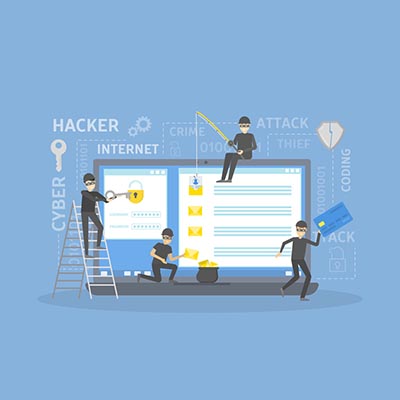Phishing Attacks Are Increasing
Everybody knows about phishing attacks by now; it’s the predominant way that hackers get into secured networks and data. Yes, everybody is aware, but that doesn’t mean we are solving the problem.
Hackers are getting more aggressive. 57 billion phishing emails go out every year. If a fraction of those emails accomplish their goal, the hackers are making out like the bandits they are.
Security Strategies and Solutions
Endpoint security has become a major consideration for all organizations. There are many strategies and solutions available that businesses can implement to protect their data and computing infrastructure.
Train Your Staff to Recognize Phishing Attacks
There is also training available to help staff understand the backhanded way these hackers try to infiltrate your network with apparently legitimate credentials. Let’s look at some forms of phishing, and talk about what you should be teaching your staff to help them prevent phishing attacks.
Deceptive Phishing
As the most common type of phishing scam, deceptive phishing seems like a redundant term. Obviously, this attack tries to deceive an unsuspecting user. A deceptive phishing email impersonates a legitimate company or person to steal personal access information.
Once they have this access, the hacker has time to pick and choose what he/she wants to take or gain access to. Since they have legitimate credentials, the illegitimate party doesn’t immediately trigger any red flags.
See What Sticks
Billions of deceptive phishing emails go out, and most are ignored, caught by filtering technology, or disregarded when accessed. It’s the tiny percentage that actually fools the end user that’s the hacker’s payoff.
To ensure that your organization doesn’t have to deal with a data breach, or malware associated with that phishing attack, make sure your employees understand the ways that these deceptive emails are different from legitimate emails.
Hallmarks of a Phishing Email
Phishing emails often have misspelled words and grammatical errors. Typically, users will be asked to download some attachment. Be sure to check the URLs first by mousing over the links to determine if the email is from a legitimate source.
Every user should be aware that emails from a financial institution demanding payment or personal information are likely phishing emails. Email is almost never used for sensitive information, especially by credible institutions.
Spear Phishing
Spear phishing attacks are personalized to the user. Personalized emails have a higher success rate at tricking users into providing network access. The spear-phishing email will often feature the target’s name, their title, their company, even information like their work phone number, attempting to get them to click on that malicious extension or URL.
Hackers Use Your Profile to Personalize Emails
Regular users of the social media site, LinkedIn, will likely come across spear phishing. Since you provide specific information for networking with other professionals, you provide the hackers with all the information they need to build these messages. Be careful what information you have shared within social media profiles, and ensure that any personalized email is legitimate before you click on anything.
Pharming
As more people become savvy to phishing attacks, some hackers resort to a newer practice called pharming. They hack an organization’s DNS server and change the IP address associated with the website name. This allows them to redirect users to malicious websites that they set up.
Check for the Lock
To protect against pharming, your staff should make sure that they are entering their credentials into a secured site. To determine if the website/webtool is secure, check that it is marked with “https” and has a small lock next to the address. Also, make sure you have a strong, continuously-patched antivirus on all your organization’s machines.
With proper training and solid security solutions, your company can avoid most phishing attacks. To learn more about data security tools, call the IT professionals at Quikteks Tech Support today at (973) 882-4644. We can help.

